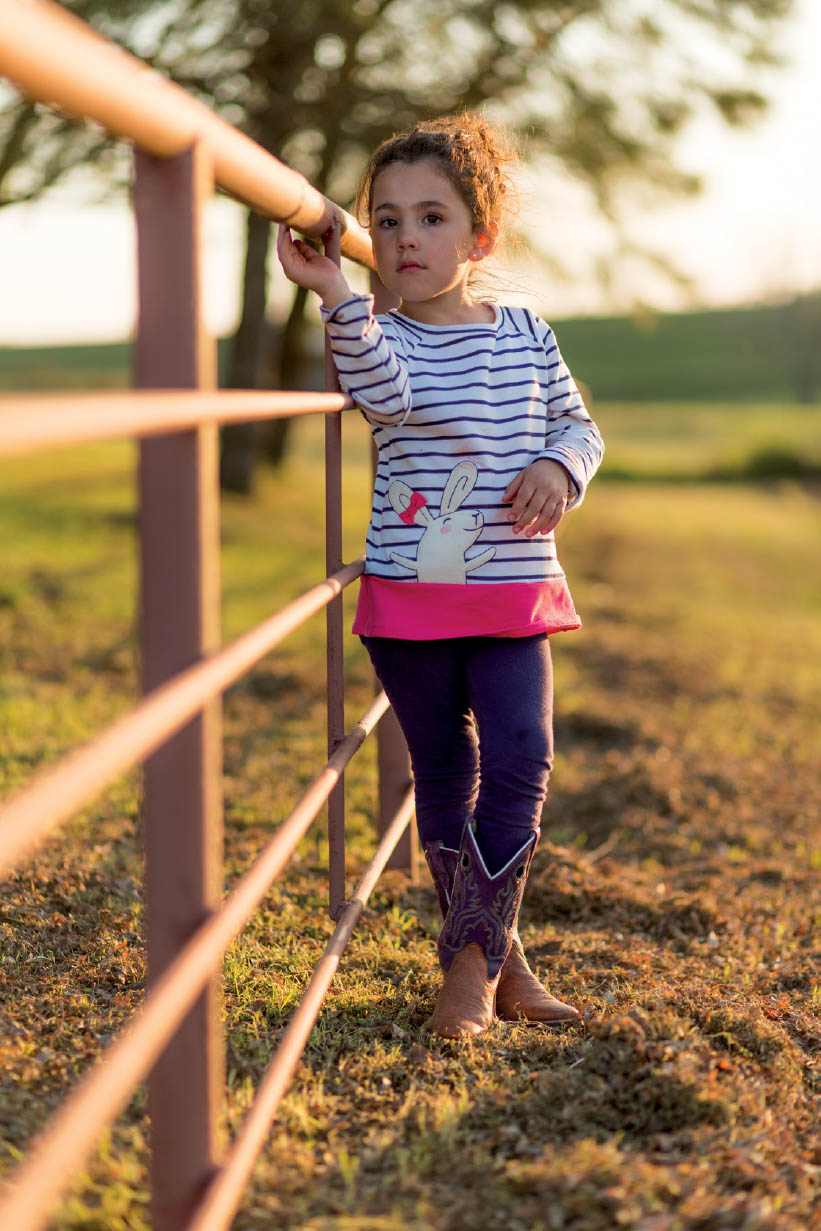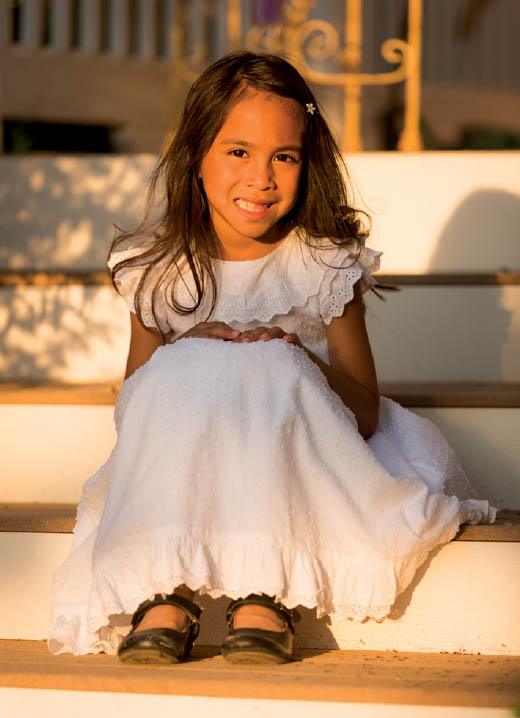24. USE LEADING LINES
![]()
IF YOU WANT to strongly direct the viewer’s eye in your frame, leading lines are your best compositional friends. Whether you start with your subject as a foreground anchor for a set of leading lines that stretch across the frame, or you place your portrait subject farther down, leading lines are attractive elements in any frame.
When it comes down to it, there are two types of lines: real and implied. Photographers work with both, and each has its benefits. Real lines are, well, real. They are comprised of actual structure in your image that appears to have linear qualities, whether they are straight or curved. For example, a fence can be used as a set of leading lines when you shoot down it toward your subject (Figure 24.1). The fence is a real structure that can be exploited for its linear characteristic.
An implied line is not made up of a singular structure in the frame, nor is it comprised of any combination of structures that were meant to work together to form a line. Instead, an implied line is one that we see amongst compositional structure. As photographers, we position ourselves to create the perception of a line in the frame that leads the viewer to or away from the subject (Figure 24.2).
Lines can appear in our frames a number of different ways. We can shoot straight into them, so they appear as horizontal or vertical structures across the frame (Figure 24.3). Or, we can shoot straight down them, conveying depth into the frame in front of and beyond our subject (Figure 24.4). Although both ways of approaching shooting with leading lines is appropriate and creatively effective, I think the latter is more engaging. When photographing down a set of real or implied leading lines, you are more strongly pulling the eye into and across the image, especially if you compose the lines to move from one side of the frame to the opposite side. In essence, when you are shooting down leading lines, you are creating a diagonal vector on which the viewing eye travels in the image.
24.1 The glowing lines of the pipe fence serve well as a real line that leads the eye to the subject.
ISO 100; 1/640 sec.; f/2; 85mm
24.2 Although the subject is in the foreground, the trees serve as a nice implied line that moves you across (to the subject) and into the frame.
ISO 100; 1/640 sec.; f/2.8; 145mm
24.3 Photographing almost straight into the staircase creates visual layers out of the tops of the steps, which serve as a nice, directly lit pattern to place behind the subject.
ISO 200; 1/1000 sec.; f/2.8; 160mm
24.4 The row of chairs and the reflection in the conference room made for a great line down which to shoot this corporate environmental portrait.
ISO 200; 1/60 sec.; f/4; 60mm
Diagonal lines always appear more dramatic. Of course, there’s no need to always be shooting down a leading line to create the appeal of a diagonal line. Simply placing a diagonal line or compositing in a way that the real or implied lines in the shot appear more diagonal is a great way of introducing this eye-catching structure.
Finally, it’s worth mentioning that some lines are incredibly obvious while others seem to elude us. Like light, it’s our job as photographers to be diligent of the things around us that make for great photography, and it’s useful to train your eye to see elements like leading lines. Real lines are fairly recognizable as compositional structure, while implied lines take a bit of training to see. Start noticing how structures can line up for you even when you’re not photographing. Exercise your eye and mind to see implied lines and pre-visualize how you can stress that line in a portrait (Figure 24.5).
Furthermore, lines often present themselves when we orient the camera in different ways. Perhaps the real or implied line(s) are missed when we look through a horizontally oriented camera, but when we turn the camera to a vertical orientation, the image falls into place. In some cases, using what’s referred to in cinematic terms as a Dutch angle, where the horizon line is leaning, opens up the image’s composition to a new set of leading lines (Figure 24.6). Doing so may also create an extra level of quirkiness, drama or uneasiness to a portrait, depending on what you want to say with it. The point is to always be discovering lines. Don’t forget to explore your options when the camera is at your eye. Re-orient your camera to see the potential for another perspective on lines for your image’s composition.
24.5 This portrait gained quite a bit of depth once I noticed the implied line the overhead lights were creating when I moved to a wider focal length.
ISO 200; 1/125 sec.; f/2; 18mm
24.6 Tilting the camera over provides an inherently attractive (although not always in a positive way) means of finding yourself to the subject. In this portrait, the leaning horizon also visually relates well to the quirkiness of the toddler’s expression.
ISO 200; 1/5000 sec.; f/2; 50mm






